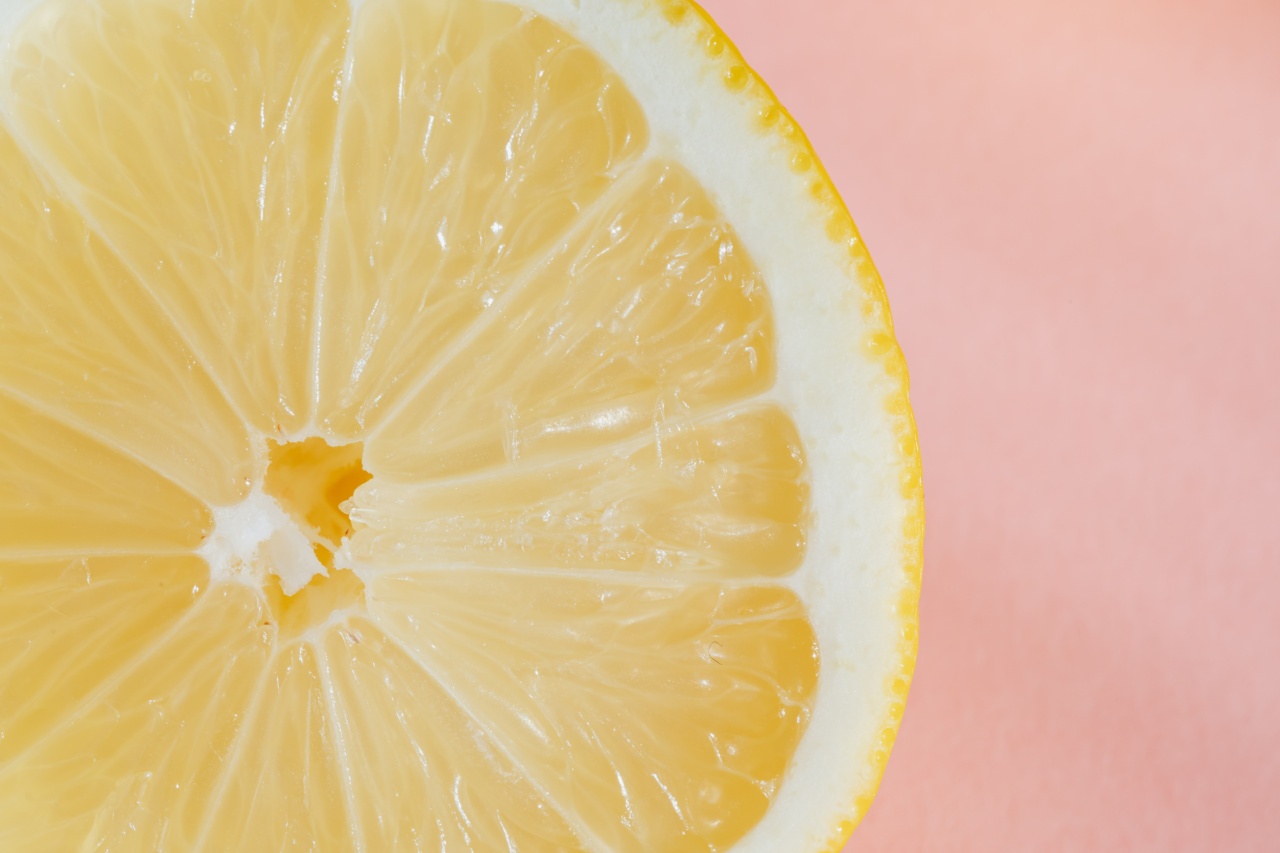Getting enough vitamin D is critical for our overall health and well-being. It plays a vital role in maintaining healthy bones, teeth, and muscles.
It also helps support our immune system and prevents chronic diseases like cancer and cardiovascular diseases. The best way to ensure that we have enough vitamin D is through regular sun exposure and a healthy diet rich in vitamin D. Here are 30 high-vitamin D foods that you should include in your diet for optimal health:.
1. Cod liver oil
Cod liver oil is one of the richest sources of vitamin D, with one tablespoon providing around 1,360 IU of vitamin D.
It is also an excellent source of omega-3 fatty acids, which have a myriad of health benefits, including reducing inflammation, improving heart health, and boosting brain function.
2. Fatty fish
Fatty fish like salmon, tuna, and mackerel are also great sources of vitamin D, with a three-ounce serving of cooked salmon providing around 450 IU of vitamin D.
These fish are also rich in omega-3 fatty acids and other essential nutrients like protein, iron, and B vitamins.
3. Canned tuna
Canned tuna is another good source of vitamin D, with a three-ounce serving of canned tuna providing around 150 IU of vitamin D.
However, canned tuna may contain high levels of mercury, so it’s best to limit your intake to avoid consuming too much mercury.
4. Egg yolks
Egg yolks are another excellent source of vitamin D, with one large egg yolk providing around 37 IU of vitamin D. Eggs are also rich in protein, vitamins, and minerals, making them an incredibly nutritious food.
5. Mushrooms
Mushrooms are unique in that they are one of the few plant-based sources of vitamin D. However, the amount of vitamin D in mushrooms can vary depending on the type of mushroom and how it was grown.
For example, shiitake mushrooms that have been exposed to UV light can provide up to 100 IU of vitamin D per 100 grams.
6. Fortified dairy products
Many dairy products, such as milk, yogurt, and cheese, are often fortified with vitamin D. For example, one cup of fortified milk can provide around 120 IU of vitamin D.
Be sure to check the label to see if the product is fortified and how much vitamin D it contains.
7. Fortified cereals
Many breakfast cereals are also fortified with vitamin D, making them an easy and convenient way to increase your vitamin D intake. One cup of fortified cereal can provide around 40 IU of vitamin D.
8. Beef liver
Beef liver is a nutrient-dense food that is an excellent source of vitamins and minerals, including vitamin D. A three-ounce serving of beef liver provides around 42 IU of vitamin D.
However, liver is also high in cholesterol, so it’s best to consume it in moderation.
9. Pork
Like beef, pork is also a good source of vitamin D, with a three-ounce serving of pork providing around 42 IU of vitamin D. Pork is also an excellent source of protein, iron, and other essential nutrients.
10. Sardines
Sardines are a small, oily fish that are rich in vitamin D, with a three-ounce serving of canned sardines providing around 177 IU of vitamin D. Sardines are also a good source of protein, omega-3 fatty acids, and other essential nutrients.
11. Soy milk
Soy milk is a popular plant-based milk that is often fortified with vitamin D. One cup of fortified soy milk can provide around 120 IU of vitamin D, making it an excellent choice for those who are lactose intolerant or vegan.
12. Orange juice
Some brands of orange juice are also fortified with vitamin D, making it another easy and convenient way to increase your vitamin D intake. One cup of fortified orange juice can provide around 100 IU of vitamin D.
13. Swiss cheese
Swiss cheese is a type of cheese that is naturally high in vitamin D, with one ounce of swiss cheese providing around 6 IU of vitamin D. Swiss cheese is also a good source of protein, calcium, and other essential nutrients.
14. Herring
Herring is another type of fatty fish that is high in vitamin D, with a three-ounce serving of canned herring providing around 162 IU of vitamin D. Herring is also a good source of protein, omega-3 fatty acids, and other essential nutrients.
15. Oysters
Oysters are a type of shellfish that are rich in many essential nutrients, including vitamin D. A three-ounce serving of oysters provides around 320 IU of vitamin D. Oysters are also a good source of protein, iron, and other essential minerals.
16. Fortified soy products
Many soy products, such as tofu, soy burgers, and soy yogurt, are often fortified with vitamin D. One cup of fortified soy yogurt can provide around 100 IU of vitamin D.
17. Fortified margarine
Some types of margarine are also fortified with vitamin D, making it an easy and convenient way to increase your vitamin D intake. One tablespoon of fortified margarine can provide around 60 IU of vitamin D.
18. Fortified plant-based milks
In addition to soy milk, many other plant-based milks, such as almond, coconut, and oat milk, are often fortified with vitamin D. Be sure to check the label to see if the product is fortified and how much vitamin D it contains.
19. Caviar
Caviar is a type of fish roe that is high in many essential nutrients, including vitamin D. One ounce of caviar provides around 33 IU of vitamin D, making it a good source of vitamin D for those who can afford it.
20. Fortified tofu
Tofu is a popular plant-based protein that is also often fortified with vitamin D. One cup of fortified tofu can provide around 157 IU of vitamin D, making it an excellent choice for those who are vegan or vegetarian.
21. Fortified orange juice
Like some breakfast cereals, some brands of orange juice are also fortified with vitamin D. Be sure to check the label to see if the product is fortified and how much vitamin D it contains.
22. Soybeans
Soybeans are a type of legume that is a good source of protein, fiber, and many essential nutrients, including vitamin D. One cup of cooked soybeans provides around 49 IU of vitamin D.
23. Fortified bread
Some types of bread are also fortified with vitamin D, making it an easy and convenient way to increase your vitamin D intake. Be sure to check the label to see if the product is fortified and how much vitamin D it contains.
24. Fortified breakfast bars
Many types of breakfast bars, such as granola bars, are often fortified with vitamin D. One bar can provide around 40 IU of vitamin D.
25. Fortified snack bars
Some types of snack bars, such as energy bars, are also often fortified with vitamin D. Be sure to check the label to see if the product is fortified and how much vitamin D it contains.
26. Fortified breakfast shakes
Some types of breakfast shakes, such as protein shakes, are also often fortified with vitamin D. One shake can provide around 100 IU of vitamin D.
27. Yogurt
Yogurt is a popular dairy product that is often fortified with vitamin D. One cup of fortified yogurt can provide around 80 IU of vitamin D.
28. Fortified cream cheese
Some types of cream cheese are also fortified with vitamin D, making it an easy and convenient way to increase your vitamin D intake. One tablespoon of fortified cream cheese can provide around 40 IU of vitamin D.
29. Fortified milk alternatives
In addition to soy and plant-based milks, many other milk alternatives, such as rice and hemp milk, are often fortified with vitamin D. Be sure to check the label to see if the product is fortified and how much vitamin D it contains.
30. Fortified soy sauce
Some types of soy sauce are also fortified with vitamin D, making it an easy way to increase your vitamin D intake. Be sure to check the label to see if the product is fortified and how much vitamin D it contains.
Conclusion
Getting enough vitamin D is essential for maintaining optimal health and preventing chronic diseases. By including these 30 high-vitamin D foods in your diet, you can easily and naturally boost your vitamin D intake and improve your health.































